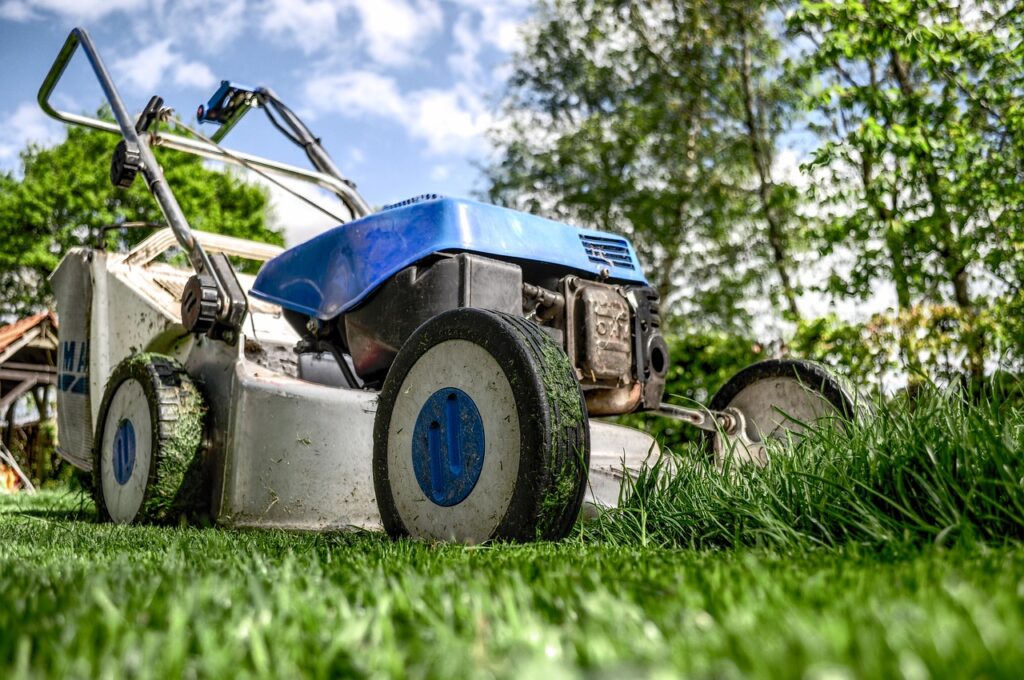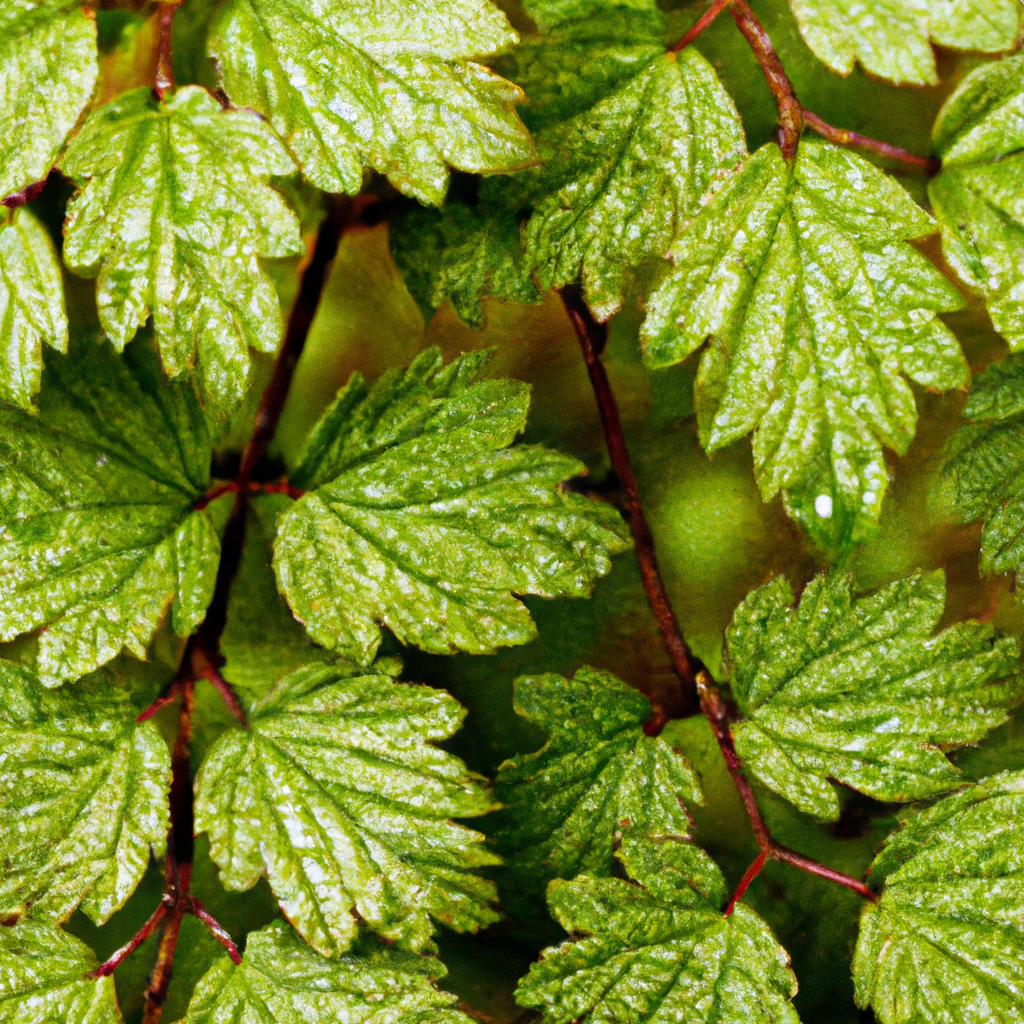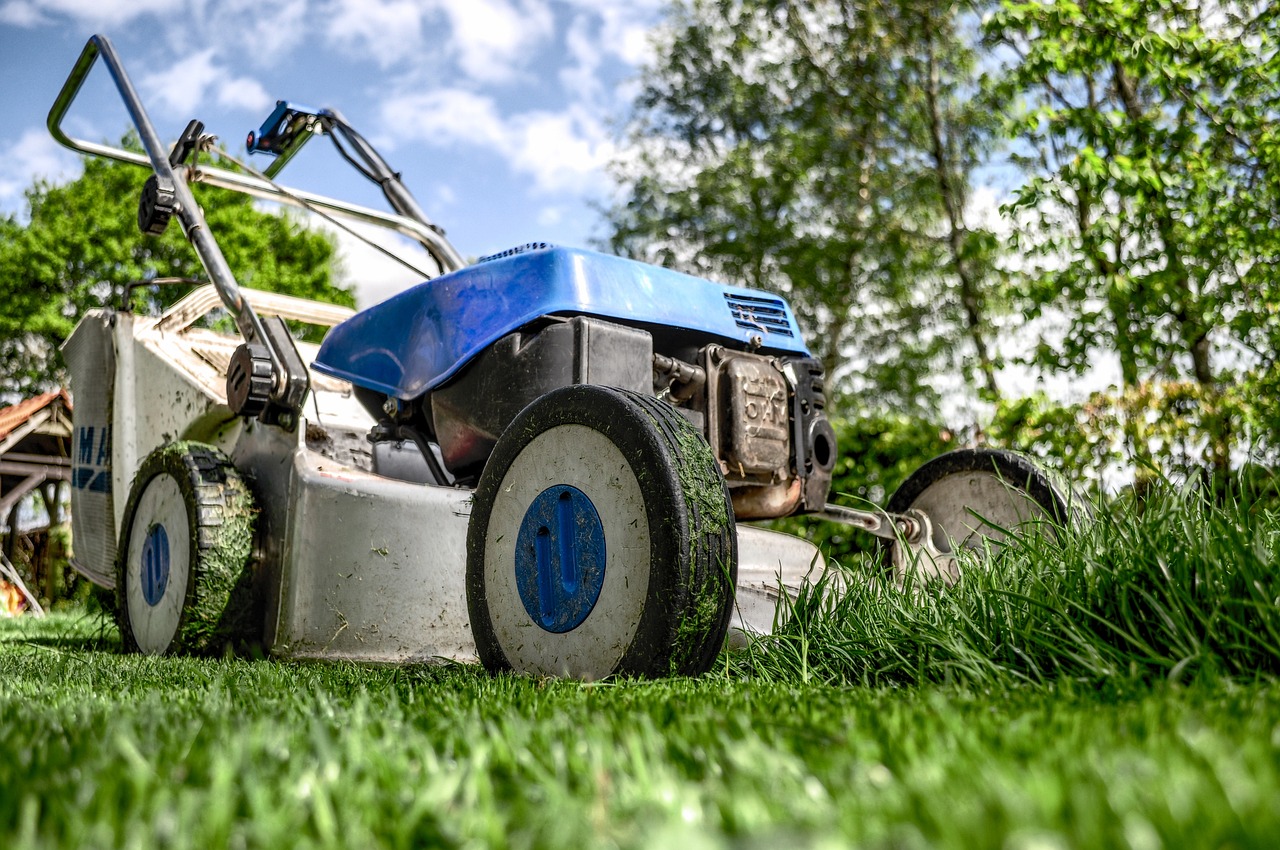Imagine stepping out onto your front porch and being greeted by a lush, green lawn, a sanctuary where you can relax and enjoy the cool shade on a hot summer’s day. Achieving a picturesque and shady lawn may seem like a mystery, but fear not! In this article, we will unlock the secrets to transforming your patchy, sun-drenched yard into a thriving oasis of greenery. From choosing the right grass seed to implementing smart watering techniques, we’ve got you covered on your journey to a vibrant and inviting outdoor space. So, put on your gardening gloves and let’s explore the secrets to achieving a lush and shady lawn together!
Choosing the Right Grass
When it comes to having a lush and shady lawn, choosing the right grass is crucial. The climate and region where you live play a significant role in determining which grass species will thrive in your area. For example, if you live in a warm and humid climate, you should consider grass varieties that are heat and drought-tolerant. On the other hand, if you reside in a cool and temperate region, you’ll want to choose grass species that can withstand cold temperatures.
Another factor to consider is the level of shade in your lawn. Some grass species require more sunlight than others. If you have a lot of trees or buildings casting shadows on your lawn, it’s important to select shade-tolerant grass varieties that can still thrive under these conditions.
Soil conditions also play a significant role in determining the success of your lawn. Some grass species prefer acidic soil, while others thrive in alkaline soil. It’s essential to evaluate the pH level and nutrient content of your soil before choosing a grass species. Conducting a soil test will provide you with valuable information on what amendments, if any, are needed to create the ideal growing environment for your grass.
Once you’ve considered the climate, shade level, and soil conditions, you can select the appropriate grass species that will thrive in your lawn. There are several options to choose from, including Bermuda grass, Kentucky bluegrass, fescue, and zoysia grass. Each grass species has its own unique characteristics and maintenance requirements, so it’s important to choose one that aligns with your preferences and lawn conditions.
Preparing the Soil
Before you can establish a beautiful lawn, it’s essential to prepare the soil properly. Start by removing any existing vegetation, such as weeds or old grass, from the area. This will allow your new grass seeds to establish themselves without any competition.
Next, it’s important to test the soil to determine its pH level and nutrient content. This will give you a clear understanding of what your lawn needs to thrive. Soil test kits are readily available at garden centers and can provide you with accurate results. Based on the test results, you can add the necessary amendments to optimize the soil conditions for your grass.
Amending the soil involves adding organic matter, such as compost or humus, to improve the soil’s structure and fertility. This will promote strong root growth and establish a healthy and lush lawn. Additionally, if you have heavy clay soil that tends to retain water, adding sand or other materials can help improve drainage and prevent waterlogged conditions.

Proper Watering Techniques
Watering your lawn correctly is essential for its overall health and vitality. To determine the watering needs of your grass, you should consider factors such as the grass species, climate, soil type, and rainfall levels in your area. Different grass species have varying water requirements, so it’s important to familiarize yourself with the specific needs of your chosen grass.
When watering your lawn, it’s best to water deeply and infrequently. This encourages deep root growth and makes your lawn more resilient to drought conditions. Watering deeply allows the water to penetrate the soil and reach the roots, rather than just wetting the surface. On average, lawns require about 1 inch of water per week, including rainfall.
To ensure even distribution of water, consider using a sprinkler system or irrigation. These systems can be set on timers to provide consistent and adequate watering for your lawn. Additionally, collecting and utilizing rainwater through rainwater harvesting can be an eco-friendly and cost-effective method of watering your lawn during dry periods.
Mowing for Optimal Growth
Proper mowing techniques are essential for maintaining a healthy and lush lawn. Setting the mower at the correct height is crucial to prevent stress and damage to the grass. As a general rule, it’s recommended to only remove one-third of the grass blades’ height when mowing. This ensures that you’re not cutting off too much at once, which can shock the grass and weaken its growth.
Using a mulching mower is highly beneficial for your lawn’s overall health. A mulching mower cuts grass blades into smaller pieces and returns them to the lawn as natural organic matter. This helps to improve soil fertility, retain moisture, and reduce the need for additional fertilizers. Additionally, mulched grass clippings provide essential nutrients to the grass, promoting healthy growth.
Following the one-third rule, mowing regularly maintains the optimal height for your lawn, prevents the grass from becoming overgrown, and discourages weed growth. Depending on the grass species, you may need to adjust the mowing schedule accordingly. Avoid mowing wet grass, as this can result in clumping and uneven cutting, which can damage your lawn.

Adequate Fertilization
Proper fertilization is crucial for providing your lawn with the essential nutrients it needs to thrive. Conducting a soil test will help determine any nutrient deficiencies in your soil and guide your fertilizer selection. Soil test results will indicate the levels of nitrogen, phosphorus, and potassium in your soil, which are the primary macronutrients required by grass.
Choosing the right fertilizer is essential to ensure the correct balance of nutrients for your lawn. Fertilizers are typically labeled with numbers that represent the percentage of nitrogen, phosphorus, and potassium they contain. For example, a fertilizer with a ratio of 10-10-10 contains 10% nitrogen, 10% phosphorus, and 10% potassium. Different grass species and soil conditions may require different ratios, so it’s important to select a fertilizer that aligns with your lawn’s needs.
Applying fertilizer at the appropriate time is crucial for optimal absorption and growth. Typically, it’s best to fertilize in the early spring and fall when grass is actively growing. Avoid fertilizing during hot summer months, as this can stress the grass and increase the risk of burning. Be sure to follow the manufacturer’s instructions for proper application rates and techniques to avoid overfertilization, which can harm your lawn and the environment.
Controlling Weeds
Regular weed control is essential for maintaining a lush and healthy lawn. Weeds not only compete with your grass for essential nutrients and water but can also detract from the overall aesthetic appeal of your lawn. There are several methods you can employ to keep weeds at bay and maintain a weed-free lawn.
Regularly removing weeds by hand is an effective way to control their spread. This method works well for isolated or small infestations. Ensure that you remove the entire weed, including the roots, to prevent regrowth. It’s essential to perform regular inspections and address any emerging weeds promptly to avoid further spreading.
Applying pre-emergent herbicides is another effective method for weed control. Pre-emergent herbicides prevent weed seeds from germinating and establishing themselves in your lawn. Timing is crucial when using pre-emergent herbicides, as they should be applied before the weeds have a chance to grow. Follow the instructions on the herbicide package carefully to ensure effective results without harming your grass.
Using natural weed control methods can also be a safe and eco-friendly approach. This includes techniques such as hand-pulling weeds, using organic herbicides, and promoting a thick and healthy lawn through proper watering, fertilization, and mowing practices. A dense and healthy lawn acts as a natural barrier against weed growth, limiting their ability to establish themselves.

Dealing with Shade
If you have areas in your lawn that receive a significant amount of shade, it’s important to take additional steps to ensure the health and vitality of your grass. Pruning overhanging trees and shrubs can help increase sunlight penetration and reduce shade. Trimming branches and removing lower limbs can create more space and allow sunlight to reach the grass.
Considering alternative landscaping options for shaded areas is another approach to take. Some plants and groundcovers are better adapted to shade and can thrive in areas where grass struggles. Using shade-tolerant grass varieties, such as fine fescue or certain types of zoysia grass, can also help ensure the success of your lawn in shady conditions.
Maximizing available sunlight is essential for promoting healthy grass growth. If possible, consider removing any structures or objects that cast excessive shade on your lawn. This could include removing unnecessary fences, relocating play equipment, or strategically planting shade-tolerant trees or shrubs to redirect sunlight to the shade-prone areas of your lawn.
Choosing shade-tolerant grass varieties is vital for success in shaded areas. These grass species are specifically bred to adapt to low-light conditions and still provide a lush and vibrant lawn. When selecting shade-tolerant grass, consider factors such as climate, soil conditions, and maintenance requirements to choose a variety that will thrive in your specific environment.
Proper Aeration
Aeration is a crucial step in maintaining a healthy lawn by improving soil compaction and promoting airflow to the grassroots. Aeration involves creating small holes in the soil to allow for better water and nutrient penetration. This process helps loosen compacted soil, allowing grassroots to grow deeper and stronger.
Understanding the benefits of aeration is essential to appreciate its importance. Aeration helps alleviate soil compaction, enhance root development, improve water absorption, and promote healthy soil microbial activity. By providing these advantages, aeration allows for better nutrient uptake and a more robust and resilient lawn.
Selecting the right type of aerator is important to ensure successful aeration. There are manual and mechanical aerators available, including spike aerators and core aerators. Spike aerators create holes by piercing the ground, while core aerators remove small plugs of soil, allowing for better water and nutrient movement. Choose the type of aerator that best suits your lawn size and specific needs.
Scheduling regular aeration will ensure that your lawn continues to benefit from this practice. Aeration is typically done once or twice a year, depending on the soil condition and grass species. It’s best to aerate in early spring or fall when the grass is actively growing and the soil is moist. Avoid aerating during dry or extremely wet conditions, as this can hinder the effectiveness of the process.
Ensuring proper post-aeration care is crucial for maximizing the benefits of aeration. After aerating, it’s important to rake up and remove the soil plugs from the lawn to prevent them from smothering the grass. It’s also recommended to overseed your lawn after aeration to fill in any bare or thin areas and further enhance the density and overall health of the grass.

Dealing with Pests and Diseases
Just like any other plants, lawns can also fall victim to various pests and diseases. Identifying common lawn pests early on is essential for effective control and prevention. Common pests include grubs, chinch bugs, sod webworms, and armyworms. Monitoring your lawn for signs of pest activity, such as brown patches, wilting, or chewed grass blades, will help you take appropriate action.
Implementing pest control measures can prevent pest infestations from damaging your lawn. There are various methods available, including the use of insecticides specifically formulated for lawn pests. When using insecticides, it’s important to follow the instructions carefully and apply them as directed to avoid harming beneficial insects and pollinators.
Practicing good lawn maintenance is a proactive approach to pest and disease prevention. Maintaining proper watering, mowing, and fertilization practices will promote a healthy lawn and make it less susceptible to pests and diseases. Additionally, removing debris and fallen leaves regularly will eliminate potential breeding grounds for pests and reduce the risk of disease outbreaks.
Recognizing signs of diseases is crucial for timely intervention and control. Common lawn diseases include brown patch, dollar spot, and powdery mildew. Symptoms can range from yellow or brown patches, thinning turf, or the presence of fungal growth on leaves. If you suspect a disease in your lawn, consult with a professional or extension service for proper identification and treatment recommendations.
Regular Maintenance and Care
Regularly inspecting your lawn is essential for identifying any issues or areas that require attention. Taking a walk around your lawn periodically and closely examining the grass, soil, and surrounding environment can help you catch problems early on. Look for signs of pests, diseases, weed growth, or any other areas where the grass appears thin or discolored.
Addressing issues promptly is crucial to prevent them from spreading or causing further damage. Whether it’s removing a patch of weeds, treating a disease, or addressing soil compaction, taking quick action will ensure the health and vitality of your lawn. By promptly addressing problems, you can prevent them from becoming larger, more challenging issues in the future.
Removing debris and fallen leaves regularly is essential for maintaining a clean and healthy lawn. Leaves and other organic matter can smother the grass and provide breeding grounds for pests and diseases. By raking or using a leaf blower to remove debris, you can promote good airflow and prevent issues related to excessive moisture and lack of sunlight.
Overseeding as necessary is a helpful practice to maintain a thick and lush lawn. Over time, grass can thin out due to environmental factors or natural aging. By overseeding, you can introduce new grass seed into these thin or bare areas, filling them in and promoting a denser turf. This helps to prevent weed growth and enhances the overall appearance of your lawn.
In conclusion, achieving a lush and shady lawn requires careful consideration and maintenance. By choosing the right grass species, preparing the soil properly, adopting proper watering techniques, mowing correctly, fertilizing adequately, controlling weeds, dealing with shade, practicing proper aeration, managing pests and diseases, and engaging in regular maintenance and care, you can create a vibrant and inviting outdoor space that you can enjoy for years to come. So roll up your sleeves, put these secrets into action, and watch your lawn transform into the envy of the neighborhood!

